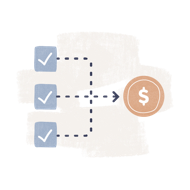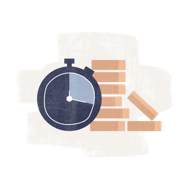Starting a business is an expensive adventure. Your savings will likely disappear, and you’ll be looking for loans or lines of credit to keep your dream alive. For many recent or not-so-recent college graduates, student loan debt can make plans to start a business seem impossible. As of 2017, 44 million borrowers had about $1.3 trillion (yes, trillion with a T) in student loans, and the average college graduate in 2016 had $37,172 in student loan debt.
Fortunately, even with student loan debt, you can plan and start your dream and still make your payments on time. Here’s your guide to starting a business with student loan debt.
Lower Your Loan Payment
As long as you’re working with a loan payment, any efforts to lower that payment will make it less of an immediate hindrance to your business plan and operations. One option is debt consolidation, which can extend the length of your loan and subsequently lower your payment. If you have sufficient income and have made your payments on time, resulting in a good credit score, refinancing could be an option as well. You can check your personal and business credit score for free with Nav while you shop around for consolidation and refinancing options. Your options depend on whether your loans are federally or privately funded.
Federal student loans are eligible for consolidation. Your interest rate will stay the same, but your term will increase and monthly payment will go down. This certainly does decrease the immediate impact of student loan payments on your cash flow, but will increase the amount of interest you pay in the end. You can also apply for Income Based Repayment programs for your federal student loans. These will calculate your monthly payment as a percentage (typically 10 or 15%) of your discretionary income. The downside to this is that you’ll have to apply each year with the Department of Education to continue decreasing your monthly payments.
Private lenders seldom offer consolidation services, and the few that do won’t extend your loan terms or reduce your interest rate. A more common option with private lenders is forbearance, which they will offer based on your needs. This is typically manifest in a 12-month break from payments.
As you look to lower your payment, be sure to know what type of student loans you have in order to choose the right refinancing or consolidation option for you.
Another option could simply be to wait a little longer and continue working a 9-to-5 job and pay down your loans as much as possible. While delaying your dreams is never a fun pill to swallow, taking that extra time with a strict budget to pay down that debt or even pay it off could make all the difference moving forward.
Make a Plan
After you’ve made your loan payments as small of a burden on your cash flow as possible, it’s time to make a plan to start your business. Whatever your idea is, there’s a specific market you’ll need to target, and a business climate you’ll need to adjust to. Taking the time to ask the right questions and do the research will pay dividends moving forward, and save you oodles of time and money.
As you write your business plan, remember that the first people you’ll have to sell to will be your investors or lenders. Detail your business strategy, your price points, and how you’ll market your product. An in-depth and well-developed business plan can make all the difference in getting your small business off the ground.
Obtain Funding
If you’re a recent graduate or recently liberated from your student loans, your savings might be a bit thin. Even if you have a happy, healthy bank account, you’ll need to find funding at some point for your business. If you’ve kept up on your payments and maintained a solid credit profile, there are loan options available for your new business.
Apart from financing, you can seek out other means such as crowdfunding and business grants, all of which can provide that all-important initial injection of capital to get you off the ground.
Whatever your idea may be for a business, just remember that student loan debt doesn’t have to hold you back. Analyze your budget and your options, get planning, and bring your dreams to life.
This article was originally written on May 11, 2018 and updated on October 17, 2019.



Have at it! We'd love to hear from you and encourage a lively discussion among our users. Please help us keep our site clean and protect yourself. Refrain from posting overtly promotional content, and avoid disclosing personal information such as bank account or phone numbers.
Reviews Disclosure: The responses below are not provided or commissioned by the credit card, financing and service companies that appear on this site. Responses have not been reviewed, approved or otherwise endorsed by the credit card, financing and service companies and it is not their responsibility to ensure all posts and/or questions are answered.